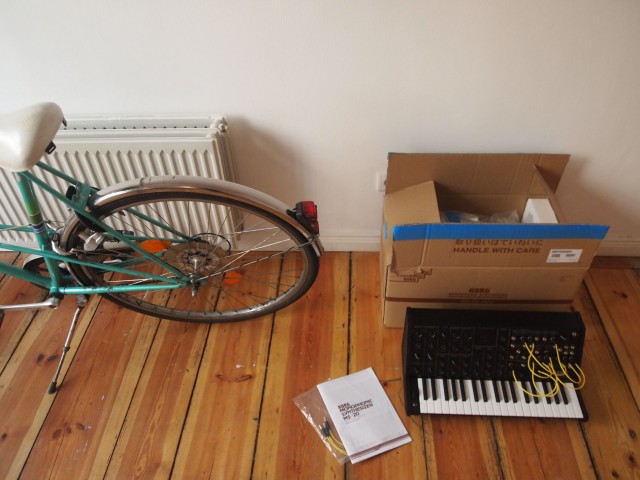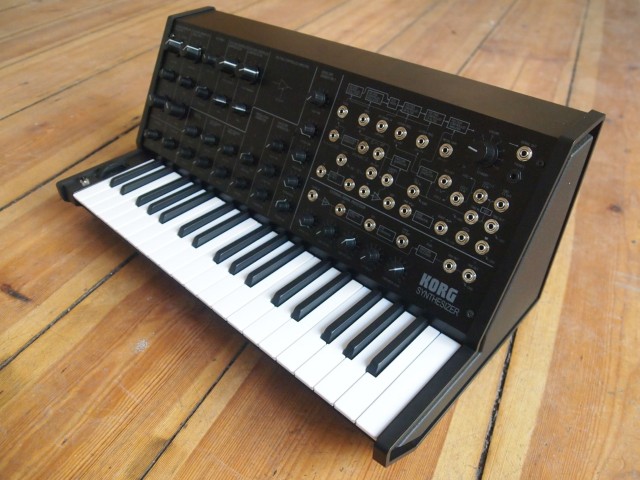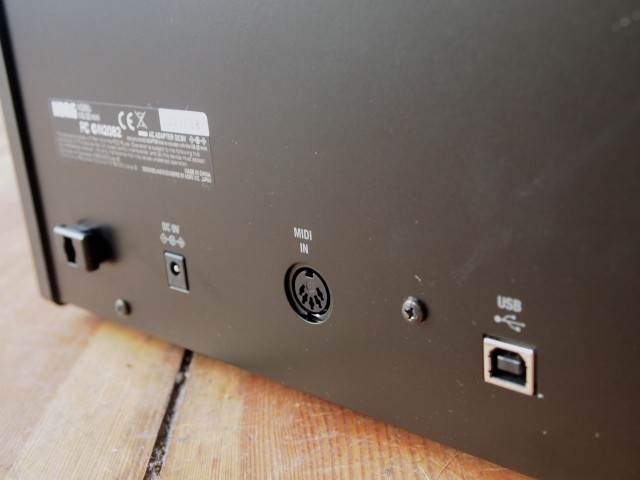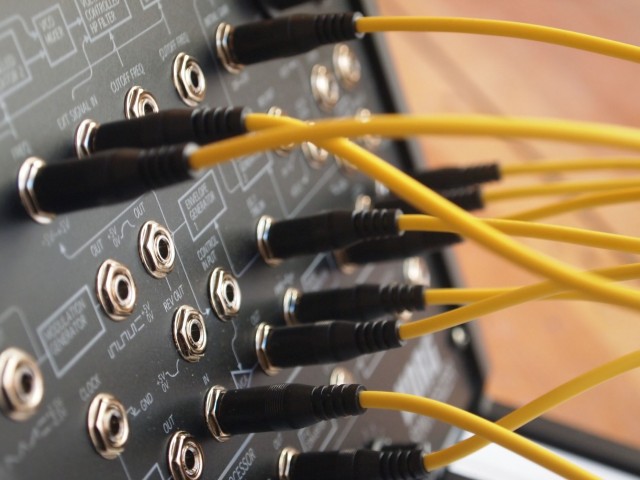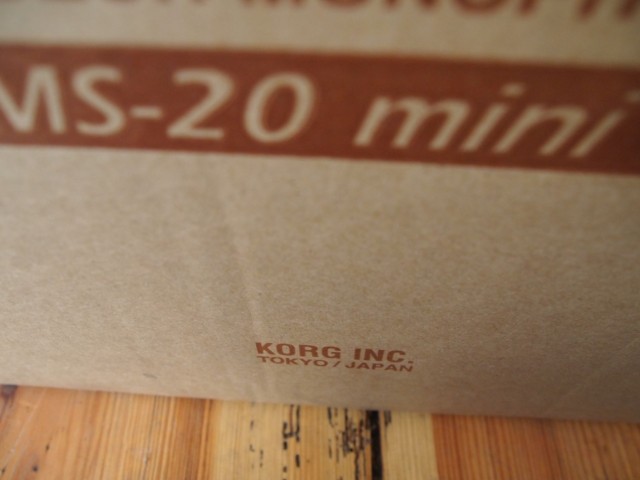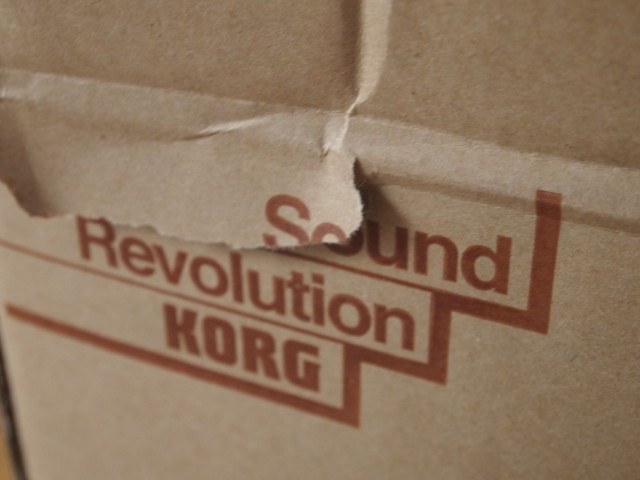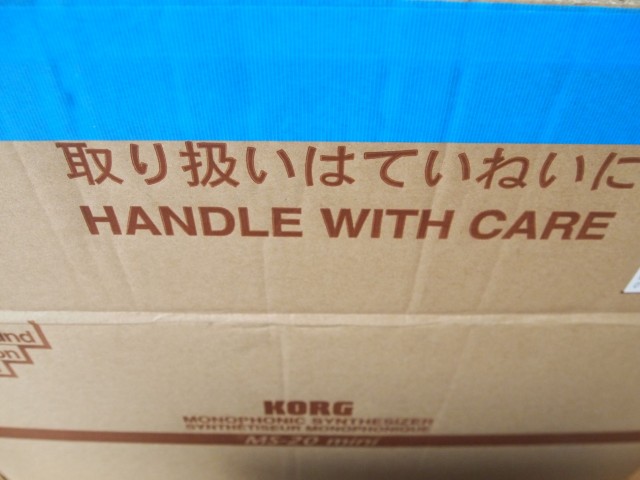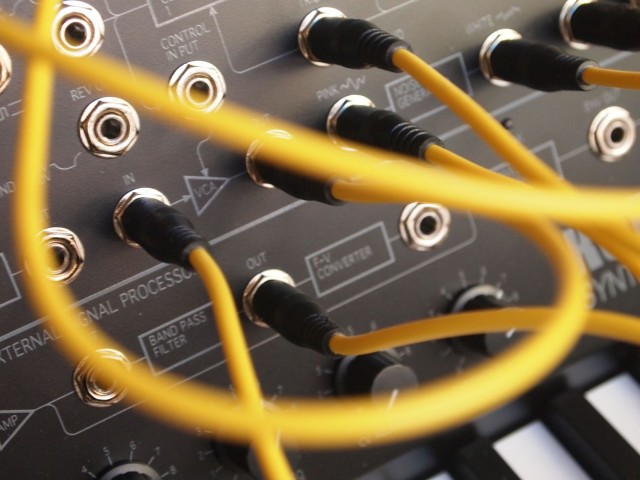Even as technology rolls forward, sometimes the old is more cherished than the new.
Perhaps this should come as no surprise in music. Musical relationships span many years – the records you love, the hours you spend practicing and producing. And so it is that we’ve heard a common refrain from electronic musicians: with many makers of the 70s and 80s still producing today, why not re-release the classics?
Korg has done just that with the MS-20 mini, in a way many rivals have not. Due soon for $599 in the USA and elsewhere in the world thereafter, it’s also within reach of many – including first-time electronic instrument buyers. Synth lovers have spread that word in recent weeks, and debated its merits. But I’ve had the chance to spend time with an MS-20 mini in person in the exclusive first review of the synthesizer.
I’ve also, with the help of DE:BUG Magazine and Benjamin Weiss, compared the new MS-20 to the original design; see our separate article.
Now, reviewing the MS-20 mini is in some ways a strange experience: it means writing a review of a design that, in many respects, comes directly from 1978. Reading over reader comments, I found that much of what you wanted to know seemed to come back to commonly-asked questions. So, I offer this review in a not-quite-Socratic dialog of questions and answers.
You can also see our impression in a video at top, shot with the help of producer Easton West (who played along) and videographer/editor Kevin Klein, in the basement of Berlin art venue Mindpirates. All the sounds you hear come, unprocessed, from the MS-20 mini.
So, what is this thing, anyway? It’s a 1978 synthesizer?
The MS-20 mini is a recreation of the original Korg MS-20 monosynth. In many respects, it is indistinguishable from the original. Korg worked with engineers who designed the original, recreating circuitry and specifications. It’s easier to say what’s different than what isn’t. The mini, as the name implies, is smaller: roughly 85% of the size of the original, it has a reduced keyboard (though still larger than most mini keyboards), and 1/8″ jacks replace the 1/4″ jacks on the first model. It also adds MIDI, over a DIN port and USB. There are also subtle changes to the voltage-controlled amplifier circuitry, though this has little impact on the user experience.
Why would I want that? Isn’t that a bit boring, since it’s no longer 1978? Only one note at a time, and two oscillators – haven’t we seen that before?
To be fair, the MS-20 mini doesn’t represent any kind of sound innovation. On the other hand, there’s a reason this basic synth architecture has endured over the decades. It’s both versatile and easy to understand. And playing one note at a time works perfectly well when you’re constructing basslines, leads, or even experimental sounds that are rich enough without having to play more than one note.
The reasons you’d want an MS-20 (mini or otherwise) over the many other possible two-oscillator synths out there is simple: sound and playability.
The MS-20 sounds good. Really, really good. (hear below; more sounds in a separate story) You get a warm, round-edged sound that you can either dial into a comfortable range or push toward the outer limits for more experimental sounds. Ring modulation between the two analog oscillators is especially satisfying. The MS-20’s filter – heard here, and released into the wild by Korg in the monotron and publicly-shared specifications – is one of the most distinctive of all times, full of interesting nooks and crannies of resonance. And that’s before you get to all the modulation possibilities, which is where you can begin to create sounds that are perhaps less expected.
All of this is possible with a particularly-balanced set of controls. Everything is available for manipulation via knobs, so you have a tactile experience of all that sound. That remains something of a challenge to provide on more complex digital synthesizers, even if their timbral range is greater. The patch bay on the MS-20 is also nice – compact, and offering a range of creative sound choices without being overwhelming. You can scratch the surface of those patches gradually, too, with a book of examples to get you started and a set of “normaled” controls (the sounds the MS makes before you plug in patch cords) that will leave plenty of room for exploration.
Wouldn’t this have been better as a module?
Well, of course, it wouldn’t be an MS-20 if it weren’t an all-in-one design. Indeed, a lot of the better rivals to the MS in this price range (like the lovely boutique MFB synth) are different in precisely this way: they’re modules, not keyboards.
In practice, there are good and bad things about the integrated design. The classic angled panel of the MS makes the whole instrument really fun to play. And the keyboard feels just right for these kinds of sounds. The real disadvantage is, you have a synth that still takes up some space when you move it around.
What’s the build quality like? Is it made of plastic? Does it feel like crap?
Knobs on the MS-20 mini feel good, though some (by design) can be sensitive to small changes, the keyboard feels springy, and the side panels are made of plastic.
In other words – the mini is exactly like the original MS-20, which had all of these characteristics. But the added result feels solid and is loads of fun.
The mini’s knobs are slightly smaller, and there are a different number of grooves on the mod wheel, and —
No, actually, it doesn’t even make sense to go into this. The MS-20 mini comes so close to the look and feel of the original that it’s almost not worth mentioning. Perhaps it’s the advantage of young age, but the main difference you’ll notice is that the MS-20 mini’s keyboard feels substantially better than on a vintage MS-20. Build quality feels perfectly solid, and the main body is made of metal, but the whole affair remains lightweight.
In the box, you also get a nice set of minijack patch cords.
How does it compare to the controller released with the Legacy Collection?
For those who don’t know about this, the Legacy Collection software, which emulates the MS-20 (among others) in virtual form as a plug-in, briefly was accompanied by a controller. That controller was a lot of fun, but there’s no comparison. The MS-20 mini feels substantially better, and has bigger keys. It’s new hardware, not repurposed in any discernible way from the Legacy Collection controller, which had a different form factor/size. (That means, for those of you keeping score at home, Korg has now made three different sizes of things that look like or are MS-20s.)
In fact, it’s worth saying: these keys really are big enough for the sorts of lines you’d play on a monosynth, even if you have reasonably-large hands.
What about MIDI? And what’s that USB jack for?
MIDI implementation on the MS-20 is bare-bones. Via MIDI DIN cable (the standard MIDI plug), you get only note values in. That works well for sequencing the MS-20 notes, but that’s it. Via USB, you get MIDI notes in and output from the MS-20 mini keyboard.
That’s all, though. The USB port doesn’t provide any further programmability or audio.
Indeed, the one criticism I’d have of the MS-20 mini is its MIDI implementation. It’d be hugely useful to be able to use MIDI control changes for some paramter control. And, indeed, there are other synths that do allow access to at least some of their parameters. Clarification: Note that “useful” or “nice to have” are not the same as “would have made sense.” The MS-20 as a result retains its original analog circuitry, which would need to be changed for MIDI parameter control, and that in turn maintains a simpler design.
It’s about the only criticism I could come up with, though, and it falls neatly under the heading of “Things I Can’t Really Complain About When The Price is Only $600.” But it does mean, as wonderful as the MS-20 mini – and its MS-20 predecessor – are, it is still worth looking at some of the other analog desktop synths out there, especially if you like sequencing more complex modulation patterns.
In place of MIDI, though, you might use analog inputs – see below.
(Updated) What about tracking and stability?
This question came up in comments; I didn’t comment on it simply because it wasn’t a factor for me in using the instrument. We found no issues with oscillator stability or pitch tracking. In fact, with the addition of MIDI note input, an MS-20 will be perfectly at home in a setup with digital synths.
Something’s wrong that it’s this cheap, though, right?
No, electronics commodity prices have come down since 1978. The reason the original MS-20 is costly is because it’s scarce, it’s sought-after, and (cough) old gear breaks. That’s something to consider if you’re looking for a reliable synth.
There are even other desktop analog synths out there that aren’t so expensive, from tiny makers rather than a giant like Korg. But what Korg can do that these other makers can’t is, well, release an MS-20. It is a really special design, and we’re gifted to be able to use it.
What about this Hertz-per-volt business? Can I use it with my Eurorack?
The MS-20 mini uses Hertz-per-volt analog control voltage. This scales differently from the volts-per-octave scheme used on Eurorack gear (among others). So, no, you can’t directly plug a Eurorack module into the MS-20 mini and expect predictable control of pitch.
It’s tough to criticize this decision, however. Korg followed the scheme used on all their vintage equipment, including their SQ-10 sequencer, and a lot of other older gear. (Yamaha is a notable example.) To change the voltage scheme would have been to make a radical change to the MS-20, clearly at odds with the concept of this re-release. And there are modules out there that do transmit Hertz-per-volt, including new Metasonix equipment. (Thanks to the legendary Berlin gear purveyor Andreas Schneider for pointing that out to me.)
For everything else, you should keep an eye out for the Harvestman English Tear, announced by its creator on analog enthusiast site Trash Audio. Maker Scott Jaeger says it’ll be the cheapest thing he’s ever done, so it should be affordable, too. And it’ll provide “easy conversion from exponential volt-per-octave to linear hertz-per-volt and back, as well as V-trigger to S-trigger conversion.”
While Scott even labels the Hertz-per-volt side as “MS,” it’s worth noting that this will prove just as useful with other gear, since the MS-20 isn’t alone.
So, should I buy one?
If you’re in the market for a monosynth, the MS-20 mini deserves strong consideration. There are other interesting monosynth keyboards out there, but the MS-20’s modular patch bay and distinctive sound and filter set it apart. And none of the others can lay claim to being a bit of history in the way the mini does. The points that might lead you elsewhere are pretty clear: if a small desktop unit is more practical, there are other options, and if greater MIDI control matters, it’s worth comparison shopping.
But I think there are two questions that get resounding answers in the MS-20 mini.
One is, did Korg manage to pull off a reissue that sounds like the original – or is even slightly better? Yes.
And does this 1978 design still hold up in 2013? Absolutely.
That should not discourage people who want to imagine new designs, rather than revisit old ones. On the contrary, it offers hope: the work we do in electronic music need not be disposable, need not be dated. The work in engineering and music making, in building technology, in practicing playing instruments, and making our musical voice heard, can pay off for years and decades to come.
